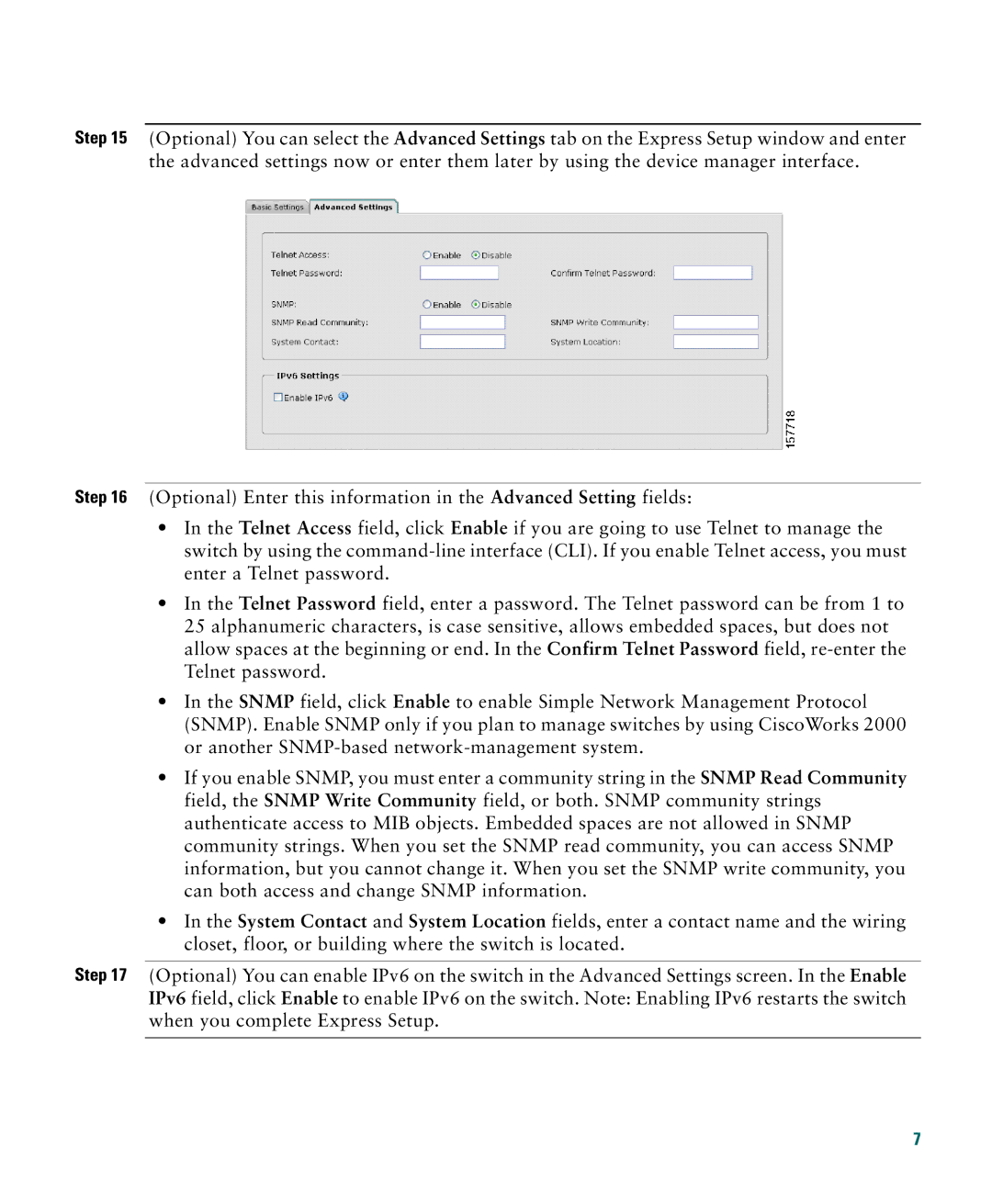
Step 15 (Optional) You can select the Advanced Settings tab on the Express Setup window and enter the advanced settings now or enter them later by using the device manager interface.
Step 16 (Optional) Enter this information in the Advanced Setting fields:
•In the Telnet Access field, click Enable if you are going to use Telnet to manage the switch by using the
•In the Telnet Password field, enter a password. The Telnet password can be from 1 to 25 alphanumeric characters, is case sensitive, allows embedded spaces, but does not allow spaces at the beginning or end. In the Confirm Telnet Password field,
•In the SNMP field, click Enable to enable Simple Network Management Protocol (SNMP). Enable SNMP only if you plan to manage switches by using CiscoWorks 2000 or another
•If you enable SNMP, you must enter a community string in the SNMP Read Community field, the SNMP Write Community field, or both. SNMP community strings authenticate access to MIB objects. Embedded spaces are not allowed in SNMP community strings. When you set the SNMP read community, you can access SNMP information, but you cannot change it. When you set the SNMP write community, you can both access and change SNMP information.
•In the System Contact and System Location fields, enter a contact name and the wiring closet, floor, or building where the switch is located.
Step 17 (Optional) You can enable IPv6 on the switch in the Advanced Settings screen. In the Enable IPv6 field, click Enable to enable IPv6 on the switch. Note: Enabling IPv6 restarts the switch when you complete Express Setup.
7
